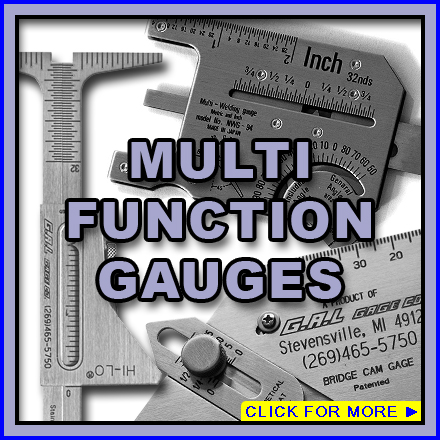The Ultimate Overview to Fillet Weld Top Quality Control: Guaranteeing Stamina and Sturdiness in Your Welded Joints
In the world of welding, making sure the toughness and longevity of fillet welds is extremely important for the honesty of bonded joints. As we get started on this expedition of fillet weld top quality control, we will certainly reveal crucial variables that affect weld toughness, dig right into efficient assessment methods, and go over methods for preventing common weld defects.
Importance of Fillet Weld Quality Assurance
Making certain correct fillet weld top quality control is vital in ensuring the architectural integrity and durability of bonded elements in numerous sectors. Fillet welds are frequently utilized in structural steelwork, bridges, stress vessels, pipelines, and other crucial infrastructure where the strength of the weld is important to overall safety and security and efficiency. Quality control actions such as aesthetic evaluations, non-destructive testing, and adherence to welding treatments help determine prospective flaws like absence of blend, insufficient infiltration, damaging, or extreme reinforcement.
Trick Aspects Affecting Weld Toughness
Accomplishing optimal weld toughness needs mindful factor to consider of various crucial elements that affect the integrity and durability of the bonded joint. The very first essential element appertains joint preparation, which involves cleaning the base steels to get rid of any type of pollutants that can compromise the weld. In addition, the fit-up of the joint is necessary to ensure appropriate infiltration and fusion of the filler product.
The selection of the proper welding strategy and specifications additionally plays a significant function in determining weld stamina. Variables such as heat input, traveling rate, and electrode angle can impact the high quality of the weld. In addition, maintaining the right interpass temperature level throughout multi-pass welding is important to prevent fracturing and make sure a solid bond between the layers.
Moreover, the choice of filler product and its compatibility with the base metals is important for attaining high weld strength. Utilizing filler product with the appropriate mechanical buildings can improve the overall stability of the weld. Post-weld warm therapy and appropriate inspection techniques are important steps in guaranteeing the stamina and sturdiness of the bonded joint.
Assessment Techniques for Weld Stability

An additional important evaluation method is liquid penetrant testing, where a liquid dye is put on the weld surface area - Gauge Fillet Weld. The color seeps into any surface-breaking issues, making them noticeable under UV light. This method works for identifying imperfections that may not be visible to the nude eye


Ultrasonic screening is additionally commonly used for checking weld stability. High-frequency acoustic wave view website are directed into the weld, and any type of disturbances in the acoustic wave pattern suggest possible problems like splits or lack of fusion.
These examination approaches play a crucial function in guaranteeing the quality and integrity of welds, inevitably adding to the overall stamina and longevity of welded joints in commercial setups.
Avoiding Typical Weld Problems
In order to maintain the architectural stability of welded joints in commercial applications, it is vital to carry out precautionary measures to resolve usual weld problems. One typical issue is absence of fusion, where the filler product stops working to bond properly with the base metals, resulting in weak points in the weld. This can be stopped by making sure correct warm control and utilizing the right welding method.
One more regular problem is porosity, caused by gas entrapment in the weld metal during the welding procedure. To stop this, it is important to cleanse the Web Site base steels completely, utilize dry electrodes, and maintain a suitable welding setting with correct air flow.
Furthermore, cracks in welds can compromise the joint's toughness. To prevent this flaw, it is necessary to control the air conditioning price after welding, utilize preheating when necessary, and pick proper welding specifications.
Enhancing Weld Longevity With Correct Methods
One vital technique to boost weld resilience is to make certain proper weld grain positioning. By positioning the weld grain accurately within the joint, the weld's stamina and resistance to exhaustion can be considerably enhanced.
Furthermore, utilizing ideal pre-weld and post-weld warmth treatments can assist lower residual tensions and boost the weld's toughness, making it extra immune to splitting and failure click site with time. Another method to improve weld longevity is to utilize premium welding consumables and base products. Picking the right filler steel and making certain the sanitation of the base steels can prevent inclusions and other flaws that can endanger the weld's durability. By executing these appropriate methods, welders can make sure that their bonded joints show phenomenal strength and resilience, satisfying the finest quality requirements.
Conclusion
To conclude, preserving excellent quality control standards for fillet welds is essential for ensuring the toughness and longevity of bonded joints. By comprehending the essential factors influencing weld toughness, using inspection approaches for weld honesty, stopping common weld issues, and using appropriate techniques, welders can enhance the overall resilience of their welds. It is necessary to prioritize quality assurance procedures to produce lasting and reliable bonded joints.
In the realm of welding, making certain the stamina and resilience of fillet welds is extremely important for the stability of welded joints. As we begin on this exploration of fillet weld top quality control, we will reveal important variables that influence weld toughness, dig right into efficient examination techniques, and review techniques for preventing common weld defects.Achieving optimum weld toughness needs careful consideration of numerous key aspects that affect the stability and longevity of the welded joint (Gauge Fillet Weld).In final thought, keeping high quality control requirements for fillet welds is crucial for making sure the toughness and resilience of bonded joints. By recognizing the key elements impacting weld toughness, making use of inspection methods for weld stability, stopping usual weld issues, and employing proper methods, welders can improve the overall toughness of their welds
Comments on “Top Methods for Measuring Gauge Fillet Weld Precisely”